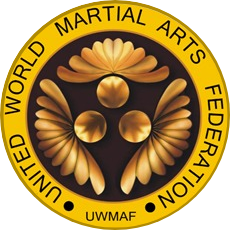QWAN KI DO / HISTORY / THE ORIGINS > THE BIRTH OF QWAN KI DO > FROM ITS FOUNDATION TO OUR DAY > WUQKD-SVAM RE-FOUNDATION
THE ORIGINS
The reunification of Vietnam took place in 1975 at the end of the war between the two political entities of North Vietnam, communist, and South Vietnam, supported by the United States of America. The conflict led to the military defeat of South Vietnam and the withdrawal of US troops from Vietnamese territory.
The economic and social policies implemented in the following years by the communist government of Ha Noi and the political aftermath of the war between the two Vietnams, as well as their divergent international political alliances, generated the flight of thousands of Vietnamese to neighboring countries (Thailand, Indonesia, Hong Kong and Japan) and overseas (USA, France, Canada and Australia).
This exerted an influence on the spread of Vietnamese martial arts around the world, in a way analogous to that which had seen the great masters of Chinese aarial arts leave, in different waves, Mao's People's China to settle in Hong Kong, Taiwan. Southeast Asia and North America.
In this sense, France played an important role in the aggregation and revival of Vietnamese martial arts abroad. During the French colonization of Indochina, Cochinchina (Saigon) was overseas territory while Tonkin (Ha Noi) was considered a Vietnamese territory under the French protectorate. The Franco-Vietnamese colonial link had created numerous links at different levels of society and allowed certain categories of Vietnamese to expatriate to France. Among these were Vietnamese martial arts practitioners and masters.
The boom of martial arts, first Japanese and then Chinese, in the world and in particular in Europe and North America during the twentieth century intensified in the second postwar period, seeing a sharp acceleration at the turn of the 60s and 70s, and it created a very favorable and receptive environment for all oriental martial arts.
It was at that juncture that the Vietnamese martial arts masters resident in Europe and particularly in France formed the first official group to promulgate their disciplines in the Western world.
A first historic meeting was held in December 1969. As a result of this first historic meeting, a Council of Vietnamese Martial Arts Masters was formed. Following other meetings, the majority of the representatives turned towards the creation of the first Vietnamese martial arts movement in the West, the Viet Vo Dao.
Among the ten Masters and Methods who laid the first foundations of a unified federation was also Master Pham Xuan Tong, exponent of the Quan Ky school, who held the position of Federal Technical Director.
In the following years, the masters and representatives of the Vietnamese martial arts currents continued their work of developing their art outside the frontier of Vietnam, in the different continents of the world.
QWAN KI DO / HISTORY / THE ORIGINS > THE BIRTH OF QWAN KI DO > FROM THE FOUNDATION TO TODAY > WUQKD-SVAM RE-FOUNDATION
QWAN KI DO / THE ORIGINS
THE ORIGINS
The reunification of Vietnam took place in 1975 at the end of the war between the two political entities of North Vietnam, communist, and South Vietnam, supported by the United States of America. The conflict led to the military defeat of South Vietnam and the withdrawal of US troops from Vietnamese territory.
The economic and social policies implemented in the following years by the communist government of Ha Noi and the political aftermath of the war between the two Vietnams, as well as their divergent international political alliances, generated the flight of thousands of Vietnamese to neighboring countries (Thailand, Indonesia, Hong Kong and Japan) and overseas (USA, France, Canada and Australia).
This exerted an influence on the spread of Vietnamese martial arts around the world, in a way analogous to that which had seen the great masters of Chinese aarial arts leave, in different waves, Mao's People's China to settle in Hong Kong, Taiwan. Southeast Asia and North America.
In this sense, France played an important role in the aggregation and revival of Vietnamese martial arts abroad. During the French colonization of Indochina, Cochinchina (Saigon) was overseas territory while Tonkin (Ha Noi) was considered a Vietnamese territory under the French protectorate. The Franco-Vietnamese colonial link had created numerous links at different levels of society and allowed certain categories of Vietnamese to expatriate to France. Among these were Vietnamese martial arts practitioners and masters.
The boom of martial arts, first Japanese and then Chinese, in the world and in particular in Europe and North America during the twentieth century intensified in the second postwar period, seeing a sharp acceleration at the turn of the 60s and 70s, and it created a very favorable and receptive environment for all oriental martial arts.
It was at that juncture that the Vietnamese martial arts masters resident in Europe and particularly in France formed the first official group to promulgate their disciplines in the Western world.
A first historic meeting was held in December 1969. As a result of this first historic meeting, a Council of Vietnamese Martial Arts Masters was formed. Following other meetings, the majority of the representatives turned towards the creation of the first Vietnamese martial arts movement in the West, the Viet Vo Dao.
Among the ten Masters and Methods who laid the first foundations of a unified federation was also Master Pham Xuan Tong, exponent of the Quan Ky school, who held the position of Federal Technical Director.
In the following years, the masters and representatives of the Vietnamese martial arts currents continued their work of developing their art outside the frontier of Vietnam, in the different continents of the world.




